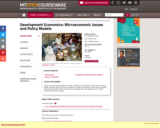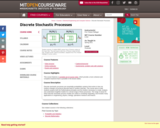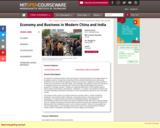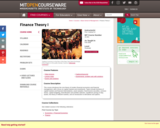
Lesson Names:Your Values and Money Your Brain and Money Overcoming Cognitive Biases
- Subject:
- Finance
- Provider:
- CT State Department of Education

Lesson Names:Your Values and Money Your Brain and Money Overcoming Cognitive Biases

Lesson Names:Budgeting 101 Budgeting Strategies Budgeting for your HomeBudgeting for Transportation Budgeting for Food Budgeting in the Gig Economy Build Your Budget

Lesson Names:Career Exploration Finding a JobResumes and Cover Letters The Interview Starting a New Job

Lesson Names:Your Money & Social Media Advertisements & Dark Patterns Comparison Shopping Identity Theft Scams & Fraud

Lesson Names:Intro to InsuranceAuto Insurance Renters & Homeowners Insurance How Health Insurance Works How to Access Health Insurance Other Types of Insurance

Lesson Names:Why Should I Invest? What is the Stock Market? What is a Stock? What is a Bond? Managing Risk Investing in Funds Deep Dive Into FundsStart Investing The Importance of Investing for Retirement How to Invest for Retirement Modern Investing

Lesson Names:Debt Management Your Credit Report Your Credit Score Building Credit from Scratch

Lesson Names:Paying for College 101 Applying for the FAFSA Scholarships and Grants Student Loans Financial Aid Packages Student Loan Repayment Time for Payback

Lesson Names:Taxes and Your Pay StubThe Tax Cycle and Job Paperwork Teens and Taxes How to File Your Taxes Completing the 1040

Lesson Names:Intro to Credit Young People & Credit Cards Using Credit Cards Wisely Loan Fundamentals Auto LoansMortgagesPredatory Lending

Introduction to the theory and application of large-scale dynamic programming. Markov decision processes. Dynamic programming algorithms. Simulation-based algorithms. Theory and algorithms for value function approximation. Policy search methods. Games. Applications in areas such as dynamic resource allocation, finance and queueing networks, among others.

This course emphasizes dynamic models of growth and development. Topics covered include: migration, modernization, and technological change; static and dynamic models of political economy; the dynamics of income distribution and institutional change; firm structure in developing countries; development, transparency, and functioning of financial markets; privatization; and banks and credit market institutions in emerging markets.
At MIT, this course was team taught by Prof. Robert Townsend, who taught for the first half of the semester, and Prof. Abhijit Banerjee, who taught during the second half. On OCW we are only including materials associated with sessions one through 13, which comprise the first half of the class.

Topics include productivity effects of health, private and social returns to education, education quality, education policy and market equilibrium, gender discrimination, public finance, decision making within families, firms and contracts, technology, labor and migration, land, and the markets for credit and savings.

Discrete stochastic processes are essentially probabilistic systems that evolve in time via random changes occurring at discrete fixed or random intervals. This course aims to help students acquire both the mathematical principles and the intuition necessary to create, analyze, and understand insightful models for a broad range of these processes. The range of areas for which discrete stochastic-process models are useful is constantly expanding, and includes many applications in engineering, physics, biology, operations research and finance.

Online resource that covers core financial concepts such as credit scores, budgeting, insurance, credit cards, student loans, mortgages, taxes, stocks, savings, 401k’s and other critical concepts. The platform tracks individual student progress and knowledge gain and provides students who successfully complete the course with certification in financial literacy.

If you are an entrepreneur, one of your priorities, in addition to building your company, is ensuring you have enough money at the right times. Early Stage Capital will consider a broad range of questions that entrepreneurs deal with on this front, including the following: What should your strategy and your priorities be in raising early stage capital? What are the market norms and standards in structuring VC deals? What are the critical negotiating strategies and tactics? How will your company be valued? How can you obtain the optimal valuation for your new venture? What are the critical elements in the relationship between venture capitalists and entrepreneurs? How is the "venture model" evolving? Is it broken? What is the impact of Super Angels and micro VCs? These are key questions that face all entrepreneurs in 2010, particularly first-time entrepreneurs. This course aims to prepare you for these decisions, as either a potential entrepreneur or venture capitalist. Using live interactions with leading figures in the venture finance community, most of the class sessions will analyze fundamental strategies of the venture-capital investment process and the critical importance of the relationship between entrepreneur and investor. As well, we will have a tactical focus on demystifying the legalities and jargon of the term sheet and the "A round" financing process. Significantly for 2010, we will also frequently consider the rapid and arguably fundamental change in VC today as the "lean startup" model threatens much of the traditional role and value of the venture investor. Disclaimer: The websites for this course and the materials they offer are provided for educational use only. They are not a substitute for the advice of an attorney and no attorney-client relationship is created by using them. All materials are provided "as-is", without any express or implied warranties.

As markets or production bases, China and India are becoming important and integral players in the global economy. Foreign direct investment (FDI), portfolio investments and outsourcing businesses have increased dramatically in these two economies. Despite the rising importance of these two economies on the world stage, our knowledge and analysis of these two countries in an integrated manner has remained poor. The two are often lumped together by business analysts as "emerging markets," despite the substantial differences in their political systems, reform policies and business organizations. Academics, in contrast, have tended to treat two countries separately, preferring to specialize in issues and questions specific to one or the other country. The purpose of this course is to analyze these two countries within a coherent analytical framework. Our learning model is inductive, and heavily based on class discussions and participation. The group projects should aim at integrating analysis, knowledge and understanding of these two countries. We will also experiment with other forms of group projects, such as creating and working on business plans and those projects that integrate research from field trips with more traditional research, such as library research.

Entrepreneurial Finance examines the elements of entrepreneurial finance, focusing on technology-based start-up ventures and the early stages of company development. The course addresses key questions which challenge all entrepreneurs: how much money can and should be raised; when should it be raised and from whom; what is a reasonable valuation of the company; and how should funding, employment contracts and exit decisions be structured. It aims to prepare students for these decisions, both as entrepreneurs and venture capitalists. In addition, the course includes an in-depth analysis of the structure of the private equity industry.

The author's goals in writing Exploring Business were simple: (1) introduce students to business in an exciting way and (2) provide faculty with a fully developed teaching package that allows them to do the former. Toward those ends, the following features are included in this text:1- Integrated (Optional) Nike Case Study: A Nike case study is available for instructors who wish to introduce students to business using an exciting and integrated case. Through an in-depth study of a real company, students learn about the functional areas of business and how these areas fit together. Studying a dynamic organization on a real-time basis allows students to discover the challenges that it faces, and exposes them to critical issues affecting the business, such as globalization, ethics and social responsibility, product innovation, diversity, supply chain management, and e-business.2- A Progressive (Optional) Business Plan: Having students develop a business plan in the course introduces students to the excitement and challenges of starting a business and helps them discover how the functional areas of business interact. This textbook package includes an optionalintegrated business plan project modeled after one refined by the author and her teaching team over the past ten years.3- AACSB Emphasis: The text provides end-of-chapter questions, problems, and cases that ask students to do more than regurgitate information. Most require students to gather information, assess a situation, think about it critically, and reach a conclusion. Each chapter presents ten Questions and Problems as well as five cases on areas of skill and knowledge endorsed by AACSB: Learning on the Web, Career Opportunities, The Ethics Angle, Team-Building Skills, and The Global View. More than 70% of end-of-chapter items help students build skills in areas designated as critical by AACSB, including analytical skills, ethical awareness and reasoning abilities, multicultural understanding and globalization, use of information technology, and communications and team oriented skills. Each AACSB inspired exercise is identified by an AACSB tag and a note indicating the relevant skill area.4- Author-Written Instructor Manual (IM): For the past eleven years, Karen Collins has been developing, coordinating and teaching (to over 3,500 students) an Introduction to Business course. Sections of the course have been taught by a mix of permanent faculty, graduate students, and adjuncts.

This course introduces the core theory of modern financial economics and financial management, with a focus on capital markets and investments. Topics include functions of capital markets and financial intermediaries, asset valuation, fixed-income securities, common stocks, capital budgeting, diversification and portfolio selection, equilibrium pricing of risky assets, the theory of efficient markets, and an introduction to derivatives and options.